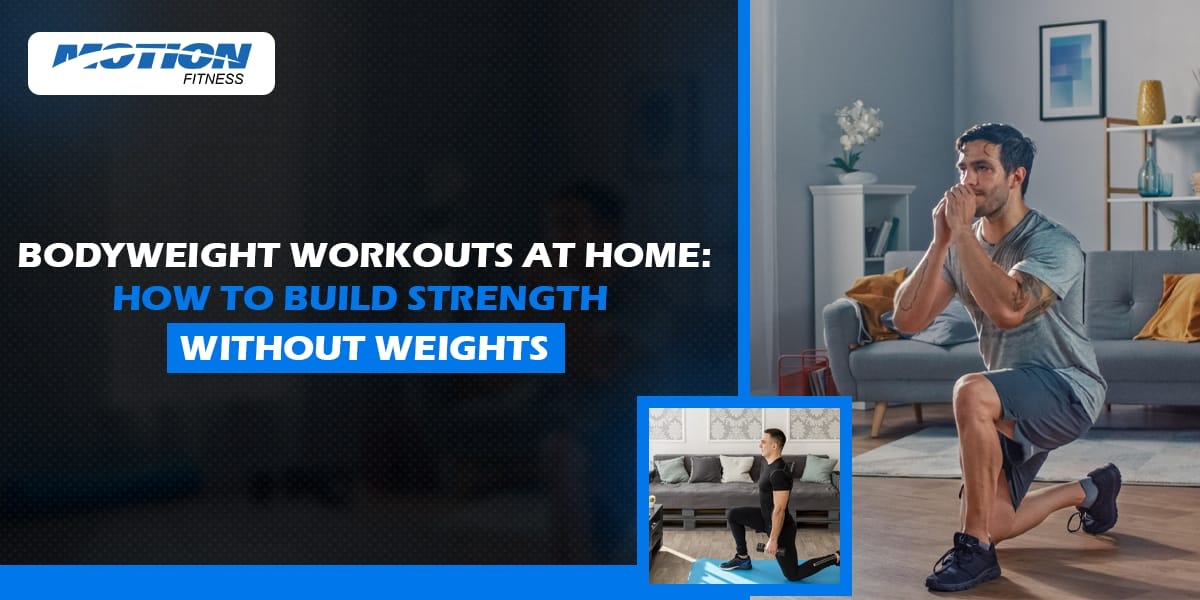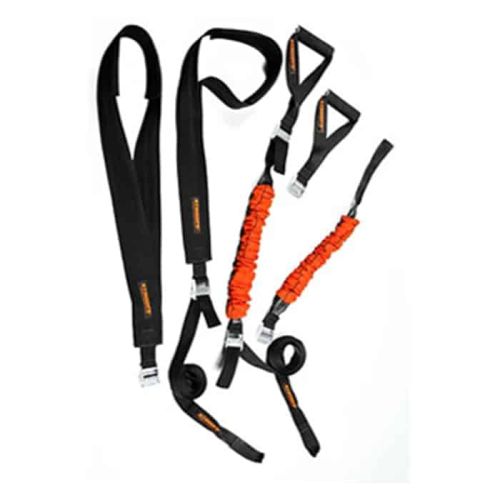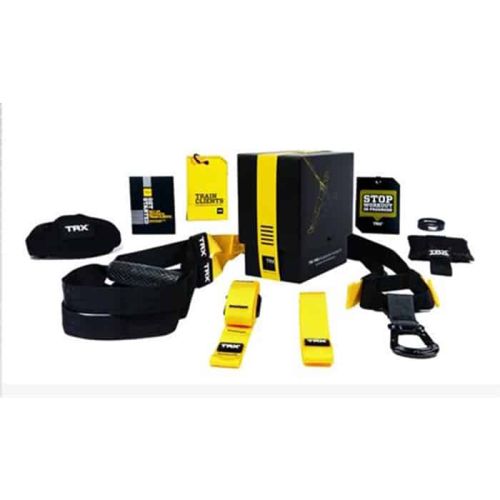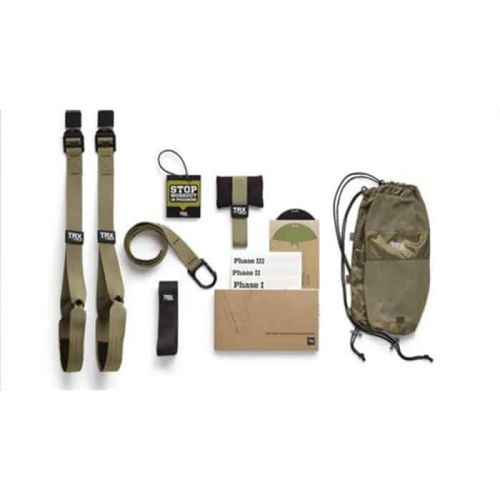
Whether the gym is inaccessible for a few days or you simply want to save money and time from your hectic schedule, bodyweight workouts at home are your best option. When done rightly, they help you stay strong, build muscle, and maintain mobility without ever stepping into a gym. If you are consistent, you are bound to see the changes.
Why Bodyweight Workouts at Home Work
Bodyweight exercises serve as one of the key foundations for a well-rounded exercise routine. It can benefit people of all sorts of fitness levels and help them with functional advantages in everyday life. Here are a few reasons why these work so well with modern-day schedules:
1. Accessibility & Convenience
These workouts are highly accessible and convenient for training anytime, anywhere. They blend into your busy schedule seamlessly. You do not need to travel to the gym or buy a lot of equipment. It is a little-to-no-equipment workout that you can start right on your living room floor.
2. Scalable Resistance
It might seem like, without weight training, you would not see much progress. However, bodyweight training allows you to scale by using different leverage and range of motion.
3. Functional Strength & Movement Quality
Most bodyweight movements are multi-joint and involve core stabilization. These are often good for daily movement. These blend into modern strength training exercises that value movement qualities alongside loading.
4. Reduced Injury Risk
For beginners and experienced exercise enthusiasts alike, bodyweight work often has less risk compared to other exercises when done right. It provides you with good technique and a gradual progression.
5. Ideal for Cross-Training & Hybrid Protocols
If you later add gym-based training and weights into your exercise regimen, bodyweight strength training goes well with cross-training equipment protocols. It offers days of rest and recovery from a heavy workout.
Key Principles to Follow
Before getting deep into the bodyweight training, one must understand a few guiding principles. These are essential for long-term progress.
Progressive Overload Without Weights
With progressive overload (without weights), your muscles grow by adapting to stress. To continue seeing results, you must gradually increase the challenge of your workouts. Without using weight, you can still bring adaptation with:
- With different leverage (e.g., incline/decline, limb positioning)
- Increasing volume (reps, sets)
- Reducing rest times
- Changing tempo (slower eccentrics, pauses)
- Combining movements into circuits or supersets
Balanced Movement Plan
Your workout should have a good balance of movement. It should include movement that uses multiple joints or muscle groups. These lead to better stability and coordination.
- Vertical push/pull
- Horizontal push/pull
- Squat/hinge/single-leg movements
- Core anti-extension, anti-rotation, anti-lateral flexion
- Mobility/flexibility
Recovery
Make sure you give your body the time to rest and recover. It helps the muscles adapt and grow.
Variation & Periodization
Do not do the same exercises for months. Bring in variations and fresh movement patterns for long-term sustainability.
How to Use Bodyweight Tools & Home Workout Equipment to Enhance Your Bodyweight Training
Even though most bodyweight workouts at home are done with little to no equipment, there are affordable and highly effective tools that can help you with better performance. Let’s examine these 5 pieces of bodyweight workout equipment that help with strength training and cross training and serve great as home workout equipment too.
1. Stroops Body Weight Gym
It is a perfect bodyweight tool to optimize your bodyweight training. The design works with or without Slastix resistance bands, based on what you are comfortable with. This system allows you to engage all your muscles and work against the resistance of your own body.
Pros
It is very versatile. The suspension rig allows pull, push, core, and squat assistance variations. It is portable, relatively lightweight, and easy to set up.
Cons
It requires a sturdy anchor for safety. As you progress, you might need to shift anchors and adjust angles to make the workout challenging. There is a slight learning curve for safe use.
Usage Tips
- Use it for assisted pull-ups, suspended push-ups, and rows, increasing core difficulty with suspended planks or pikes.
- Change the angle or leverage to make exercises harder/easier.
- As you build strength, reduce assistance until you can do the movement with purely bodyweight.
2. TRX PRO Suspension Training Kit
It is a versatile tool that brings the gym experience to your home or wherever you go. It is designed to provide full-body workouts using suspension training. It uses adjustable straps and bodyweight resistance to bring strength, balance, and core stability. This kind of suspension training has its roots in the Navy SEALs.
Pros
The durable build quality is suitable for bodyweight exercises or bodyweight strength training. There are adjustable straps to help with many levels of exercise. It is great for core stability and mobility.
Cons
Similar to Stroop, it relies on a steady anchor. It is less ideal for maximum strength pushing.
Usage Tips
- Use TRX rows, chest presses, suspended lunges, pike push-ups, body saws, and rotational core exercises.
- To progress, move your feet forward or angle your body.
- Consider combining it with floor push-ups or dips to balance push/pull volume.
3. TRX FORCE Kit: Tactical
It is a complete set of workout kit. It has everything you need to train anywhere. It was originally designed for military personnel and tactical athletes to be able to train in any environment. It is built to withstand extremely rugged conditions, which adds to its durability.
Pros
Apart from durability, it is also good for outdoor anchoring or rough use. Heavier individuals can benefit from this.
Cons
It is slightly more expensive than other gear in this list. Like all other suspension gear, you will need to move to other variations once you build strength.
Usage Tips
- You can use it as an alternative to regular TRX for outdoor setups.
- It’s good for crowd classes or multiple users.
- Use it for push, pull, core, and leg variations.
4. Body-Solid Tools Soft Medicine Balls
These are great for a number of strength training and endurance exercises. These soft medicine balls are moisture and scuff-resistant, making them ideal for bodyweight training. They are easy to catch and handle, making them less risky.
Pros
These are great for various bodyweight/plyometric work and core throws, which complement static or strength bodyweight progressions. The soft shells absorb impact, making it great for use at home. These are great for integrated strength, coordination, and endurance exercises.
Cons
The size and bounce may be limited to tight indoor spaces. Over time, the medicine balls can lose shape. These are also less suitable for high-impact slams.
Usage Tips
- Use med-ball push-ups to increase instability.
- Do rotational slams, overhead throws, side tosses, and kneeling passes to engage the core.
- Use as a mid-circuit tempo or explosive movement to increase heart rate and engage different muscle fibers.
Build Strength. Build Confidence. Build Consistency.
Bodyweight training is not just about working out. It is about commitment to maximize your potential with minimum resources. Forget complicated gym machines and workout spaces. Make your living room into a fitness haven with these tips and equipment.
Conclusion
Bodyweight training stands at the heart of modern-day strength training. With Motion Fitness training equipment, you can turn any space into your personal gym. No matter how small or big your home is, we have something for everyone.
Shop Motion Fitness gear to make every set count.
Frequently Asked Questions about Bodyweight Workout:
Q1. Why is variation necessary for bodyweight workouts?
A1. Fresh movement patterns keep your exercises from being monotonous. It is sustainable in the long term.
Q2. Why are recovery periods essential in a bodyweight workout regimen?
A2. Recovery periods help muscles grow and adapt to the routine. It also helps relax and not overstrain the body.
Q3. Are bodyweight workouts safe for beginners?
A3. When done in proper form, bodyweight workouts are generally safe for beginners. Avoid rushing into advanced moves and focus on techniques.







